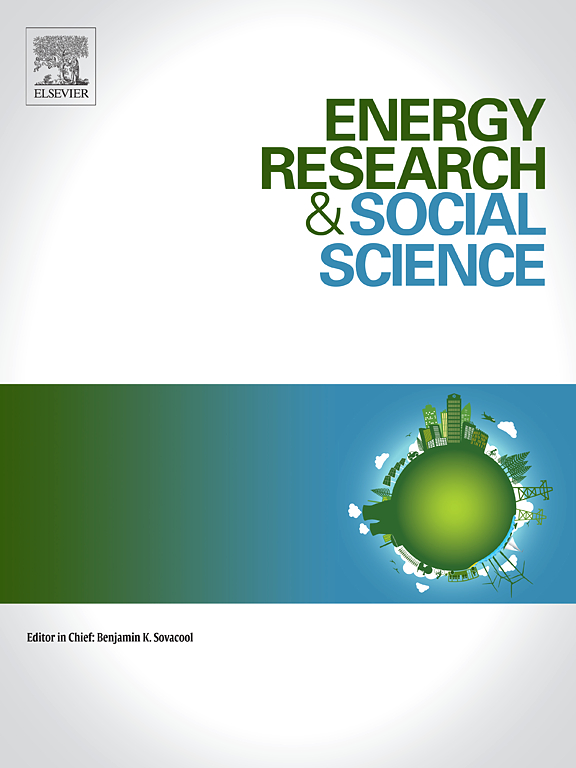日常时间性的定量分析:一种基于实践的方法来理解能量峰值(在)灵活性
IF 7.4
2区 经济学
Q1 ENVIRONMENTAL STUDIES
引用次数: 0
摘要
了解日常实践的临时性——能源需求峰值的根源——已经被认为是缓解能源峰值的一个重要但被忽视的步骤。为了解决这一差距,本研究使用基于实践的方法来定量评估人们日常实践的临时性如何有助于他们将能源密集型实践转移到能源峰值之外的灵活性,并由此扩展到参与削峰需求侧响应措施。我们将序列分析、聚类分析和不灵活性指数的新组合应用于美国时间使用调查数据,区分了时间灵活和时间不灵活的群体,并确定了制度和家庭节奏是不灵活性的关键原因。由于机构和(或)家庭步调而受到复杂日程安排限制的团体受到时间限制较多,很少或根本没有灵活性来调整其活动的时间。为了弥补这种灵活性的缺乏,我们主张有针对性的、对时间敏感的需求侧响应和无形的调峰措施,如灵活的工作时间,作为实现更有效和公平的能源调峰的更好选择。本文章由计算机程序翻译,如有差异,请以英文原文为准。

Quantitative analysis of everyday temporality: A practice-based approach in understanding energy peak (in)flexibility
Understanding the temporality of everyday practices—the root of peak energy demand—has been recognized as an essential but overlooked step in the quest to mitigate energy peaks. To address this gap, this study uses a practice-based approach to quantitatively assess how the temporalities of people's everyday practices contribute to their (in)flexibility to shift energy-intensive practices outside of energy peaks and, by extension, engage in peak-shaving demand-side response measures. Applying a novel combination of sequence analysis, cluster analysis, and an inflexibility index to American Time Use Survey data, we distinguish between time-flexible and time-inflexible groups and identify institutional and family rhythms as key causes of inflexibility. Groups tied to complex schedules arising from institutional and/or domestic pacers are found to be under higher time constraints, having little or no flexibility to adjust the timing of their activities. To cater for this lack of flexibility, we argue for targeted, and temporality-sensitive demand-side response and invisible peak-shaving measures like flexible working hour as better alternatives for achieving more effective and equitable energy peak shaving.
求助全文
通过发布文献求助,成功后即可免费获取论文全文。
去求助
来源期刊

Energy Research & Social Science
ENVIRONMENTAL STUDIES-
CiteScore
14.00
自引率
16.40%
发文量
441
审稿时长
55 days
期刊介绍:
Energy Research & Social Science (ERSS) is a peer-reviewed international journal that publishes original research and review articles examining the relationship between energy systems and society. ERSS covers a range of topics revolving around the intersection of energy technologies, fuels, and resources on one side and social processes and influences - including communities of energy users, people affected by energy production, social institutions, customs, traditions, behaviors, and policies - on the other. Put another way, ERSS investigates the social system surrounding energy technology and hardware. ERSS is relevant for energy practitioners, researchers interested in the social aspects of energy production or use, and policymakers.
Energy Research & Social Science (ERSS) provides an interdisciplinary forum to discuss how social and technical issues related to energy production and consumption interact. Energy production, distribution, and consumption all have both technical and human components, and the latter involves the human causes and consequences of energy-related activities and processes as well as social structures that shape how people interact with energy systems. Energy analysis, therefore, needs to look beyond the dimensions of technology and economics to include these social and human elements.
 求助内容:
求助内容: 应助结果提醒方式:
应助结果提醒方式:


